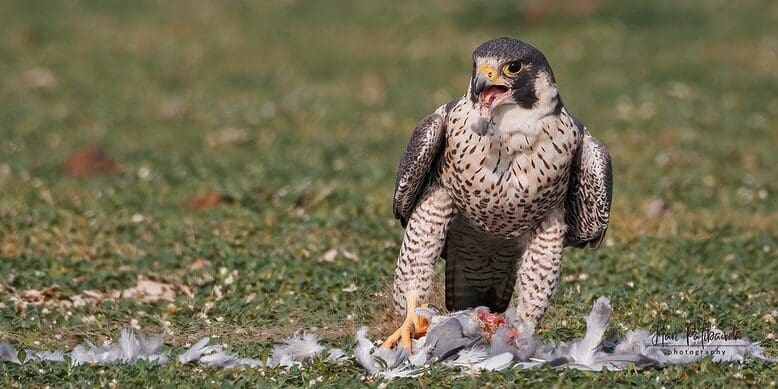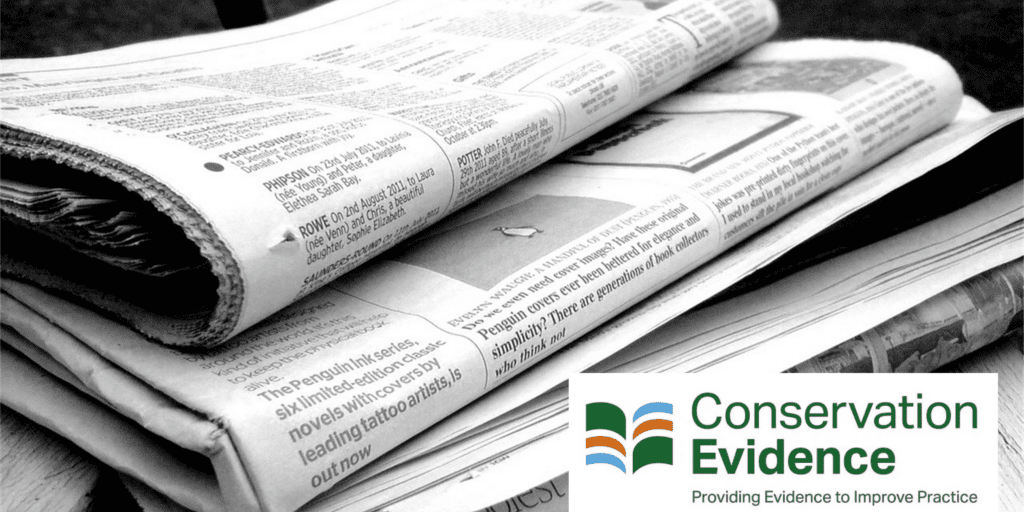Can we use perches to attract birds and increase seed dispersal in degraded areas?
This blog post was written by Jelaine Gan, PhD student at Newcastle University, UK and University of the Philippines Diliman, Philippines.

In this UN Decade on Ecosystem Restoration, we need to find innovative and cost-effective ways to restore forest ecosystems and outpace deforestation. Most of the time, restoration initiatives involve planting trees in degraded landscapes, but tree planting is resource-intensive and can be expensive. Moreover, there is also the question of whether it will result in gains for biodiversity, as this depends on the species planted (often non-native and monoculture) and the survival of the seedlings.
Thankfully, forest ecosystems have built-in processes to heal and regenerate. We can tap into these processes and assist forests to regenerate. Assisted natural regeneration (ANR) is a restoration strategy designed to accelerate regeneration by minimizing disturbances, such as grazing, and removing barriers to seedling growth, such as through weed removal.
Assisted natural regeneration strategies can also focus on increasing seed supply. Seed arrival is critical to restoration of degraded areas, and in the tropics, most forest tree species are dispersed by animals. Birds are one of the most important seed dispersers, able to fly great distances and across different land uses. They are the natural “planters” of the forest, but the challenge is: how do we attract them to the degraded areas where seeds need to go?
Bird perches as a restoration tool
Perches. Unassuming and simple, artificial perches like wooden poles and fence posts placed in degraded areas can attract fruit-eating birds from nearby forest. While on the perch, nature might call, and from their gut, out come the seeds. Aside from artificial ones, there are also natural perches, like single standing trees and some semi-natural ones, which are constructed using dead branches that birds may find attractive to perch on.
That’s the idea, but is it actually effective? Studies have compared the seed rain under a perch (treatment) and without a perch (control), but different studies have found conflicting results suggesting that it is not as simple as it seems.

To resolve these uncertainties, our team conducted a systematic review of the literature examining the impact of perches on seed arrival and seedling establishment. Briefly, the review summarizes data from different individual studies around the world and provides a transparent and objective basis to inform conservation decisions. We employed meta-analysis methods to assess the overall effectiveness and to investigate whether effectiveness varies according to landscape and bioclimatic features, such as habitat type and bioregion.
We found a total of 396 studies from 79 articles. A disproportionately large number of studies were conducted in Brazil (25%), followed by Spain and the USA (13% each), while few studies were found from the Indomalaya and Australasia regions. Perches came in different forms, including live fences (i.e., living trees tied with wire), wood piles, rocks, isolated trees, tree islands, and propped-up dead branches.
All three types of perches (natural, artificial, semi-natural) had a significant positive effect on seed rain. More seeds from more species were found under perches than the control sites, signifying their effectiveness in increasing the arrival of seeds in the area.

Next question: Does a seed turn into a seedling?
Even if seed arrival was improved by perches, seeds must germinate and establish as seedlings for forests to regenerate. We found positive effects on seedling density and potentially on richness when using natural perches, but not with artificial or semi-natural perches. Natural perches like trees can provide shade and protection to growing seedlings, thereby increasing their survival rate. This emphasizes the importance of protecting single standing trees and other natural elements in degraded areas, as they can serve as the focal point for regeneration.
However, if natural perches are not present in the restoration site, artificial perches can be used to promote seed arrival, and follow it up with additional treatments, such as soil amelioration and weeding, to improve seedling establishment.
(Some) Factors that can affect perch effectiveness:
(1) Distance of the perch from the forest: Birds may be reluctant to use the perch when it is out in the open, which is associated with higher predator risks and lower resources. Therefore, we expect that the probability that a bird will use the perch is higher if the perch is placed closer to the forest. However, based on the 79 studies we reviewed, distance to the forest has little to no effect on the effectiveness of perches.
(2) Habitat complexity: Birds are more likely to visit areas that are similar to their primary habitat. For instance, forest birds are more likely to visit areas with greater vegetation cover; hence, perches placed in shrubland would be more effective than those in open grassland. Contrary to our prediction, perches were slightly more effective for seed-related outcomes in less complex habitats (i.e., grasslands) than in more complex ones (i.e., shrublands). In open landscapes, birds have no other options for perching, thus installing artificial perches can have greater positive impact on seed rain and/or seedling establishment compared to areas with alternative perches (e.g., other trees in the shrubland).
(3) Biome: Perches only work if birds are the main seed dispersers in that forest ecosystem! It won’t work for restoring coniferous forests because conifers are wind-dispersed or in highly degraded areas where birds have already gone locally extinct.
Important caveats!
There was high heterogeneity (i.e. variation between studies) in our meta-analysis, which means that perches may not be effective all the time. We have mentioned above some of the factors that may explain the variability, but there are many other factors to consider, such as the temporal (how long) and spatial (how big) scales of the studies. In addition, studies can be biased due to their design, method, implementation, and reporting, among other factors. Results of the meta-analysis should therefore be interpreted with caution, but they do offer some insights that can inform restoration action.
Comics for communication
We partnered with the Massachusetts College of Art and Design to develop a comic book entitled How Birds Can Help Farms and Forests in Northern Philippines. Art beautifully designed by Jessica Stutman and co-developed with Dr. Caroline Hu. Check out the full comic here.




